Sweden’s capital is spread across 14 islands where Lake Mälaren meets a Baltic Sea inlet. In Stockholm you’ll find yourself jumping from island to island as each one has its own character and reasons to visit.
You can venture into the maze of cobblestone alleys at the Gamla Stan (Old Town), gaze back at the city from hip Södermalm, or take a day out at the museums and amusement parks amid the greenery of Djurgården.
And that’s just the beginning. As well as a justified reputation as one of the coolest places in the world, Stockholm packs in some of the best museums around, royal palaces and a natural setting that is unlike any capital anywhere.
1. Djurgården Royal Park
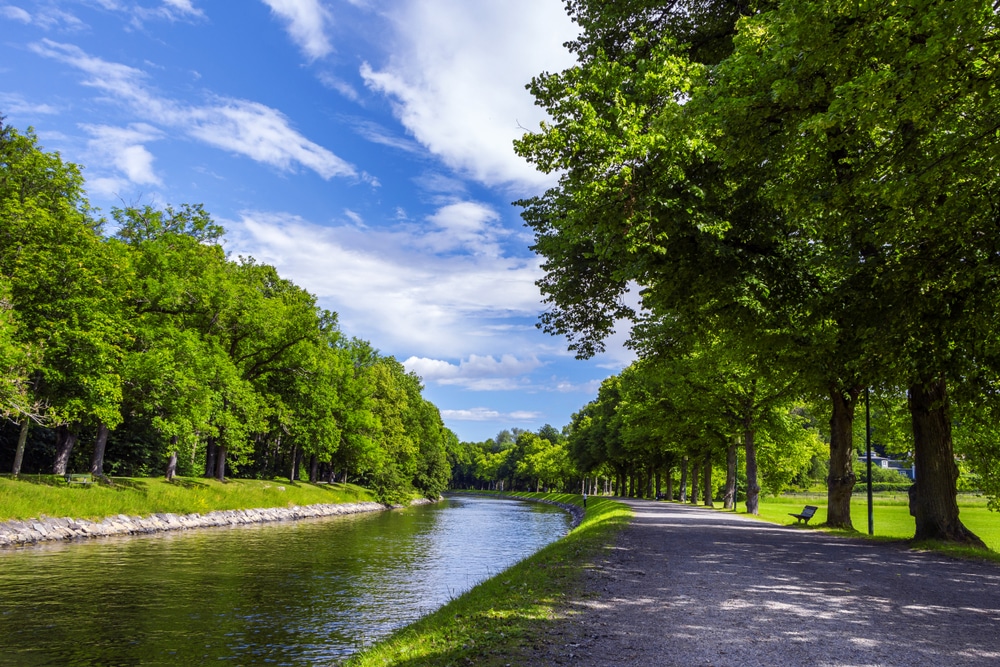 Source: Nadezhda Kharitonova / Shutterstock
Source: Nadezhda Kharitonova / ShutterstockStockholm has an entire island set aside for family and cultural attractions.
At Djurgården, these are all embedded in idyllic greenery, with trails weaving through forest and along the waterfront. It’s all an easy walk from the city centre via the scenic Strandvägen boulevard, but you can also get there by bus, historic tram or ferry.
The name, “Djurgården” comes from the 16th century when the island was declared a royal game park for John III. Over time, Djurgården became a place for popular entertainment rather than the preserve of royals.
The trailblazing outdoor museum, Skansen opened in 1891, and the 1897 General Art and Industrial Exposition of Stockholm furnished the west side of the island with much of its architecture.
Now there’s a multitude of museums and family attractions, making up a big chunk of this list. In fact, you could devote an entire holiday to Djurgården and not come close to experiencing everything.
2. Vasa Museum
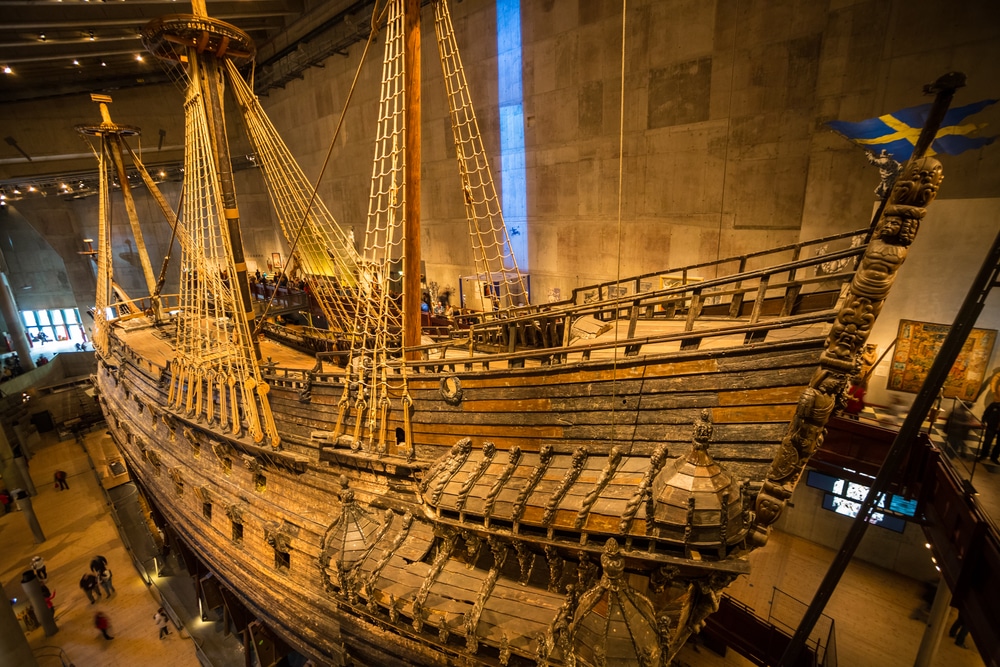 Source: Matej Kastelic / Shutterstock
Source: Matej Kastelic / ShutterstockIn 1628 the 64-gun warship Vasa foundered little more than a kilometre into its maiden voyage.
For more than three centuries the vessel, built in the early years of the Swedish Empire, was preserved in the mud before being raised once more in 1961.
The Vasa is on show in a purpose-built museum that opened in 1990, undergoing constant and painstaking preservation. Amazingly, 95% of what you see is original, including the highly intricate carvings on the stern.
The wreck was like a time capsule from the 1620s, giving up thousands of artefacts, not to mention the remains of several people, giving the world invaluable insights on a host of subjects, from 17th-century shipbuilding techniques to daily life in Sweden at the time.
You’ll find out about the salvage and preservation operations, learn about the Stockholm Shipyard in the 1620s and see the recreated faces of people who went down with the ship.
Tons of artefacts are on show, from cannons to a sailor’s chest packed as it was four centuries ago, while replicas of the carvings on the hull have been painted using the pigments available in the 17th century.
Website: https://www.vasamuseet.se/en
3. Skansen
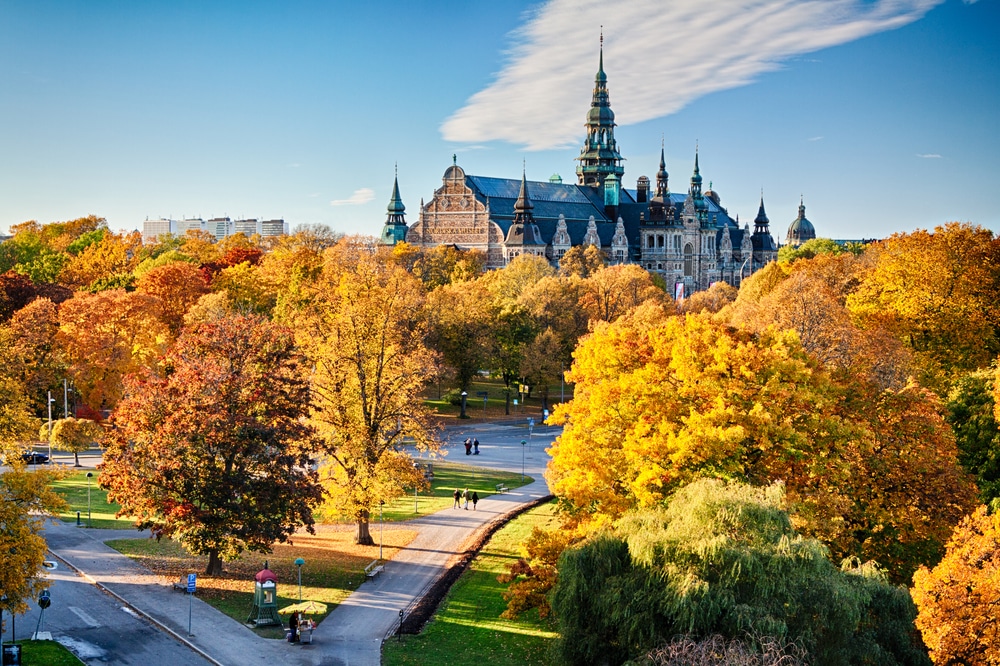 Source: Viacheslav Savitskiy / Shutterstock
Source: Viacheslav Savitskiy / ShutterstockOne of the first open-air museums in the world, Skansen opened its doors in 1891 and set the template for this kind of attraction, to the point where the word “Skansen” means “open-air museum” in many places.
The man behind it, Artur Hazelius (1833-1901), wanted to give visitors a snapshot of rural life in Sweden before industrialisation.
In 30 hectares on the hill dominating Djurgården are 150 farmsteads and dwellings transferred to this site from all corners of Sweden.
You can get up there on the Skansens Bergbana, a funicular running since 1897. What awaits you is a replica of a 19th-century rural town, in which you can see old-time trades in action at a bakery, tannery, shoemaker and silversmith.
Skansen has an open-air zoo inhabited by Scandinavian species like reindeer, moose, brown bears, otters, grey seals and lynxes. The museum also celebrates Swedish traditional celebrations like Walpurgis Night, Midsummer and Lucia.
Website: https://www.skansen.se/en/
4. Gamla Stan
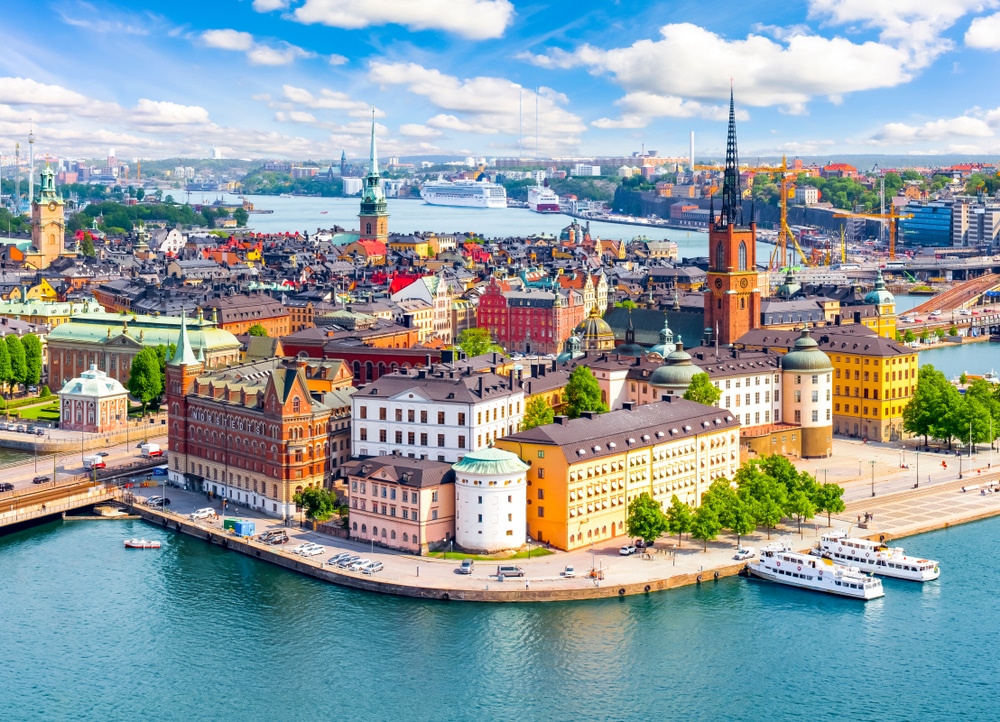 Source: Mistervlad / Shutterstock
Source: Mistervlad / ShutterstockStockholm’s original centre grew up on Stadsholmen island in the 13th century and is a go-to for dining, going out, shopping and just to poke around the scurrying cobblestone alleys.
For hundreds of years, this was the full extent of the city, and now it’s like a living outdoor museum and one of Europe’s largest and best preserved historical centres.
If you look at a map of Stadsholmen from the 16th century you’ll be shocked by how little the street plan has changed, especially in the centre and the column of tight alleys cutting in from the water to Österlånggatan on the east side.
Almost all of the architecture is from the 17th and 18th centuries and colourfully painted, in ochre tones; often built over Medieval vaulted cellars, some of which are integrated into bars, restaurants, galleries and shops.
Västerlånggatan and Österlånggatan are the main streets, but you’ll want to see every inch of Stadsholmen and the little island of Riddarholmen on its west flank.
5. The Royal Palace
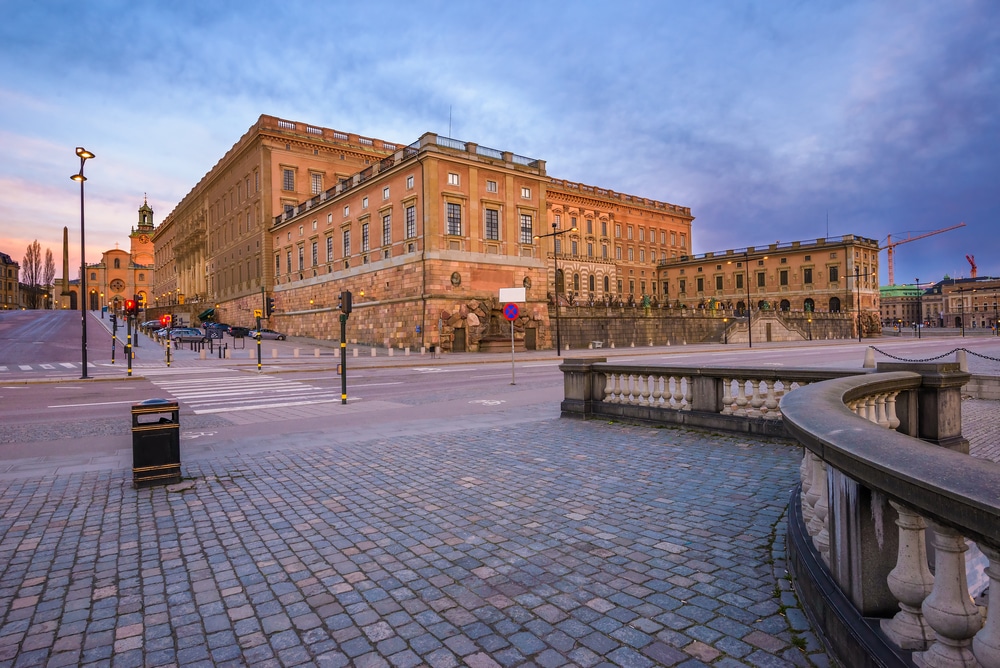 Source: Kalin Eftimov / Shutterstock
Source: Kalin Eftimov / ShutterstockOne of Europe’s largest palaces is slap bang in the middle of Stockholm on the north side of Galma Stan.
Begun in 1700 after the Medieval Tre Kronor Castle (The Crowns) on this site burnt down in 1697, the Royal Palace has 600 rooms on 11 floors.
Despite its immense scale the Baroque Royal Palace isn’t exactly gathering dust, as the King’s official residence, venue for royal receptions, and the workplace for the King, members of the Royal Family and the Royal Court of Sweden.
For all its official functions the Royal Palace is open to the public, and has three museums within its walls.
You can tour the magnificent Royal Apartments, neatly preserved and flush with historical insight over more than three centuries.
In the State Apartments, for instance, you can see where Gustav III died after being shot in 1792. Sweden’s exquisite Royal Regalia is on display at The Treasury, while Gustav III’s Museum of Antiquities shows off the sculpture acquired by the king on his tour of Italy.
Also essential is the Museum of the Three Crowns, painting a picture of the Medieval castle that came before the Baroque palace.
In summer, catch the changing of the guard ceremony, every day at 12:15, lasting around 40 minutes and accompanied by a military band and horse parade.
https://www.kungligaslotten.se/english/royal-palaces-and-sites/the-royal-palace.html
6. Stockholm City Hall
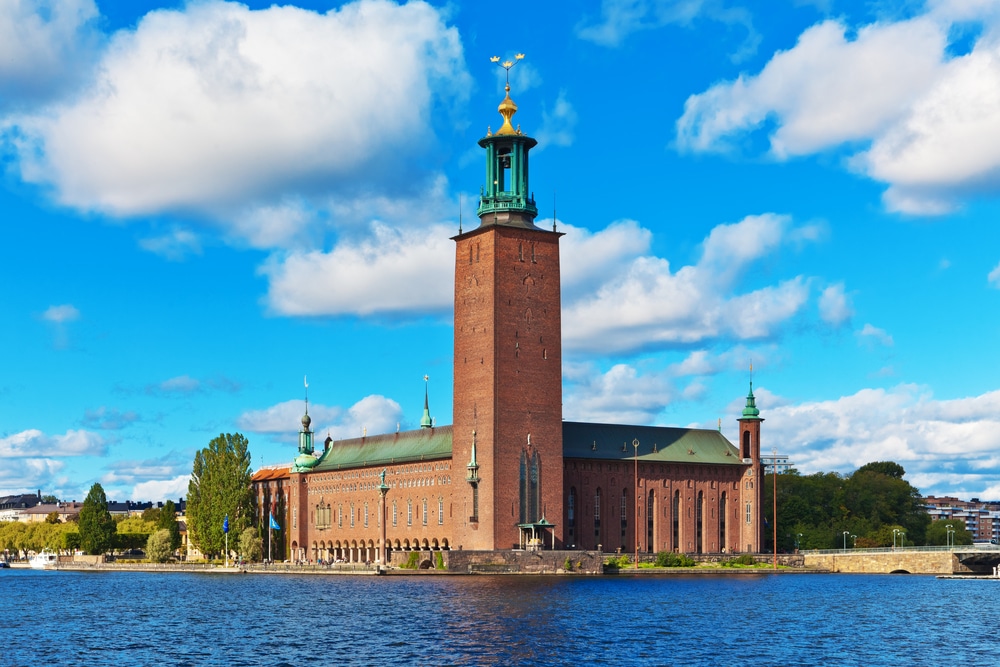 Source: Oleksiy Mark / Shutterstock
Source: Oleksiy Mark / ShutterstockCutting a powerful outline on the north shore of the bay is Stockholm’s unmistakeable City Hall, built in the Nordic National Romantic Style throughout the 1910s and ready in 1923.
The building has a Romanesque simplicity on the outside, but the interiors are opulent and need to be seen when the monument opens up for tours in the summer.
The cavernous Blue Hall is the setting for the Nobel Banquet on 10 December, and its organ, with 10,000 pipes is the second-largest instrument in Scandinavia.
After the Nobel Banquet the guests move to the Golden Hall for the ball. This space is awe-inspiring, clad with shimmering mosaics inspired by Swedish folklore and history, made up of 18 million tiles.
The 106-metre tower capped with the symbolic, golden Three Crowns can be scaled via 365 steps for an instagrammable view of Stockholm’s islands and the Riddarfjärden.
Website: https://cityhall.stockholm/
7. Fotografiska
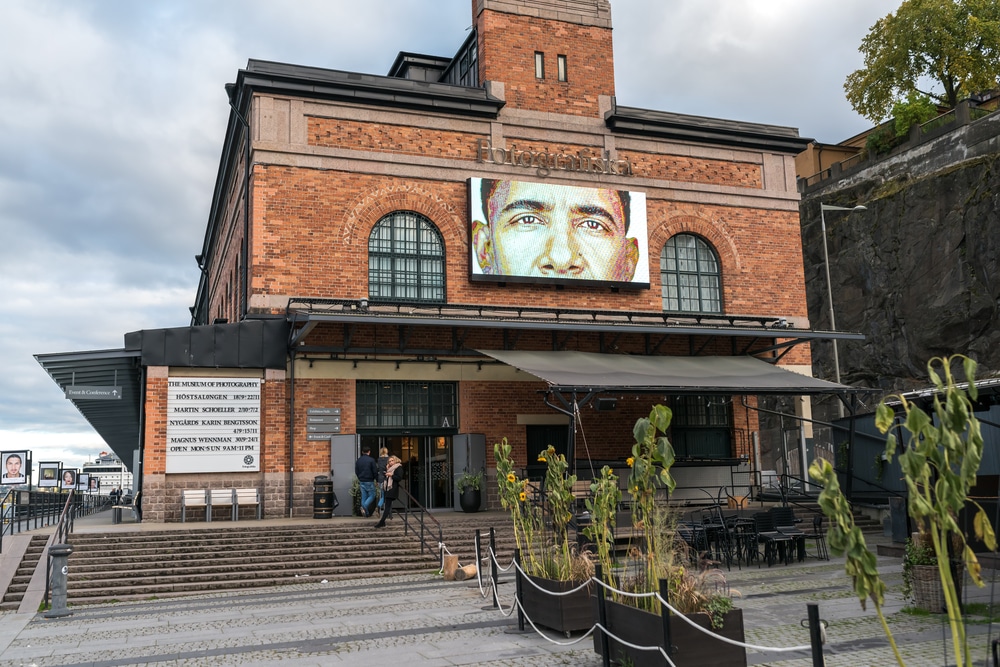 Source: A. Aleksandravicius / Shutterstock
Source: A. Aleksandravicius / ShutterstockOne of the world’s largest spaces for contemporary photography resides in an elegant old customs house on the north side of Södermalm Island, dating to 1906.
The attraction, not strictly a museum because it has no collections, opened in 2010, and holds four major exhibitions and up to 20 smaller exhibitions each year.
For a taste of Fotografiska’s programming, recent shows have covered the Hubble Space Telescope, the surrealistic world of Erik Johansson and a retrospective for celebrated Finnish photographer Pentti Sammallahti.
The enormous group exhibition, Nordic Life, was sourced with the work of 1,000 photographers capturing everyday life in the Nordics.
Fotografiska also hosts regular cultural events like concerts, and has one of the top restaurants in the capital, acclaimed for its sustainable gastronomy and endowed with one of the finest views of Stockholm from its “Chambre Séparée” on the upper floor.
Website: https://www.fotografiska.com/sto/en/
8. Gröna Lund
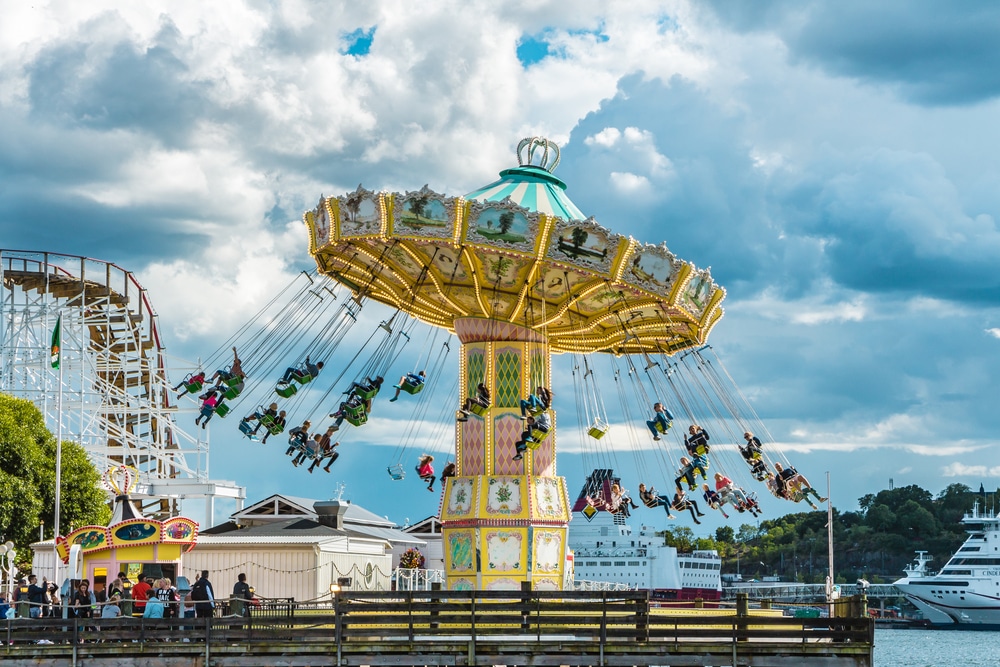 Source: Nadezhda Kharitonova / Shutterstock
Source: Nadezhda Kharitonova / ShutterstockStockholm’s fun-filled amusement park squeezes more than 30 rides and amusements into a small-ish plot by the water on Djurgården.
The park has been around since 1883 and its tangle of rollercoasters and tower rides is an abiding feature of the waterfront in the centre of Stockholm.
If you’re into white-knuckle rides you’ll be surprised by how up-to-date the choice is, with four inversions on the steel rollercoaster Monster open from 2021, and a jumble of spins and flips on Insane from 2009.
Elsewhere there’s tons of fun on spinners, tower rides, bumper cars, a haunted house, drop towers and more than different rides for the smallest members of the clan.
Gröna Lund also has a busy schedule of live entertainment all summer long, and ABBA, Bob Marley, Jimi Hendrix, Robyn, The Cardigans and Sting are just some of the artists to have performed here since the 1960s.
Website: https://www.gronalund.com/en
9. Drottningholm Palace
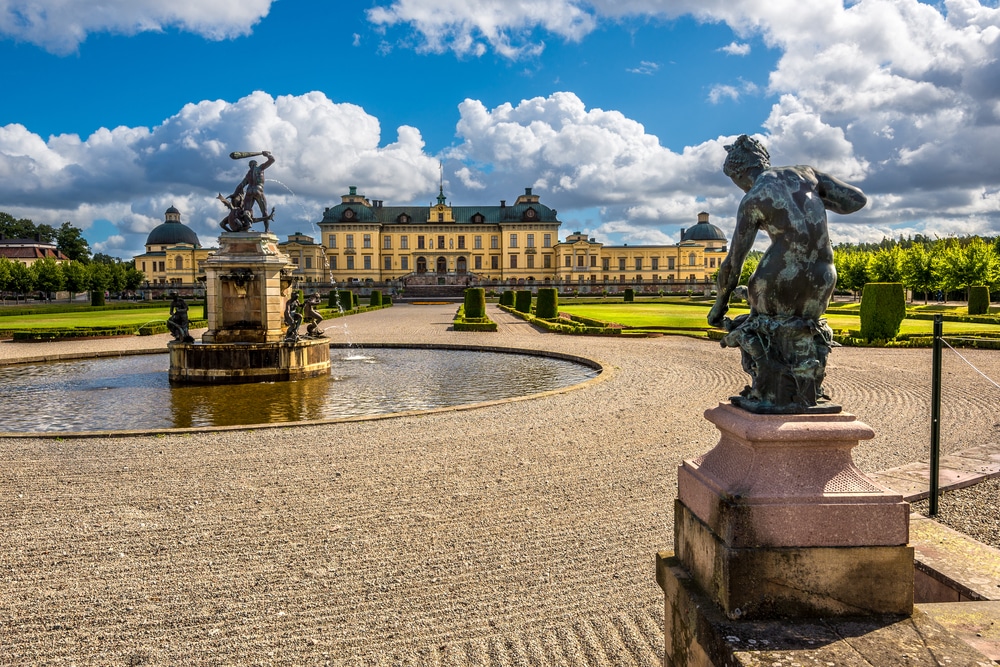 Source: Kalin Eftimov / Shutterstock
Source: Kalin Eftimov / ShutterstockAn outing to keep on your agenda is the UNESCO-listed permanent residence of the Swedish Royal Family, on the island of Lovön, a short metro and bus ride west of the city centre.
Drottningholm means “Queen’s Islet” and the palace, built in the French Baroque style between 1662 and around 1750, is treasured as an immaculately preserved monument from the days of the Swedish Empire.
Many of the leading Swedish figures of the age gathered here, like Carl Linnaeus who catalogued the natural specimens in the royal collections.
Much of the palace, apart from the private south wing, is open to the public, and on your tour you’ll see the impact made by a long succession of rulers.
Tour highlights include the opulent Reception Halls, the dazzling Chinese Pavilion and the glorious Baroque garden from 1681.
Allow as much time as you can for a separate tour of the Palace Theatre (1754), one of the few 18th-century opera houses still in use, and endowed with all of its original stage machinery.
Appropriately, the summer season at the theatre is anchored in the 18th century, with performances of Mozart, Haydn, Gluck and Handel.
10. Nationalmuseum
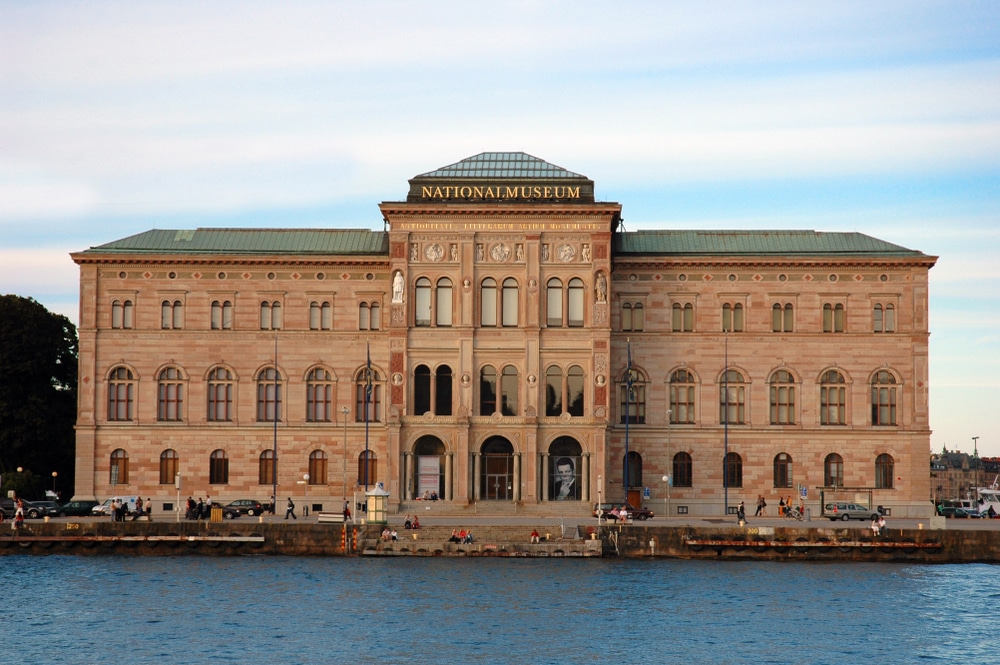 Source: The World in HDR / Shutterstock
Source: The World in HDR / ShutterstockReopened in 2018 after a long renovation, the Nationalmuseum is Sweden’s sparkling national gallery, founded back in 1792 and showcasing fine art, decorative arts and design from the 1500s to the 1900s.
There’s a vast amount of things to see in a mammoth neo-Renaissance palace from 1866, constructed across the water from the Royal Palace at the tip of the Blasieholmen peninsula.
Around 5,000 pieces from a collection running to 700,000 are on show at one time. The main thread is the Timeline, a chronological whirl of painting, sculpture, arts and crafts, sculpture, drawings and prints, all displayed together to give you a richer understanding of each period and style.
In the smaller rooms, off the main halls, there’s extra detail on specific periods for a deep dive.
Give yourself time to see the Design Depot, charting 300 years of ceramics and the Treasury, where littler objects like pocket watches, jewellery, boxes and miniature paintings in the museum’s converted former offices.
Website: https://www.nationalmuseum.se/en
11. Stortorget
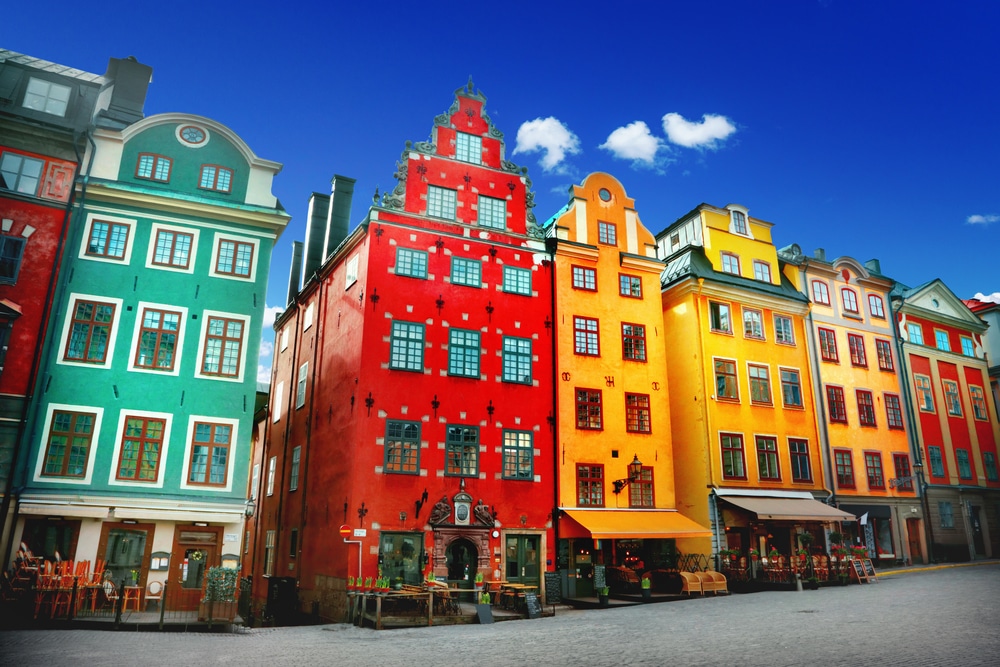 Source: Adisa / Shutterstock
Source: Adisa / ShutterstockStockholm’s oldest square is the central point from which the Gamla Stan grew, and so goes back to the very beginning of the 13th century.
It’s a favourite with tourists, and no wonder, because there’s something photo-worthy in every direction.
The Nobel Prize Museum is in the Stock Exchange Building from the 1770s, but the sight that makes it onto postcards is the square’s western frontage.
Here there’s a terrace of tall 16th and 17th-century houses with gables in varying designs, and facades in green, red and yellow.
There has been a well on Stortorget since the Middle Ages, but the solemn Stortorgsbrunnen there today, crested by urns, is from the 1770s.
Belying the hospitable ambience on the square, Stortorget has quite a dark past, as the scene of many executions down the years, including the Stockholm Bloodbath in 1520 when Christian II hanged and executed 90 people here in the space of just three days.
On a jollier note, Stortorget has a lovely Christmas market, with little red stalls selling handicrafts and seasonal treats.
12. Moderna Museet
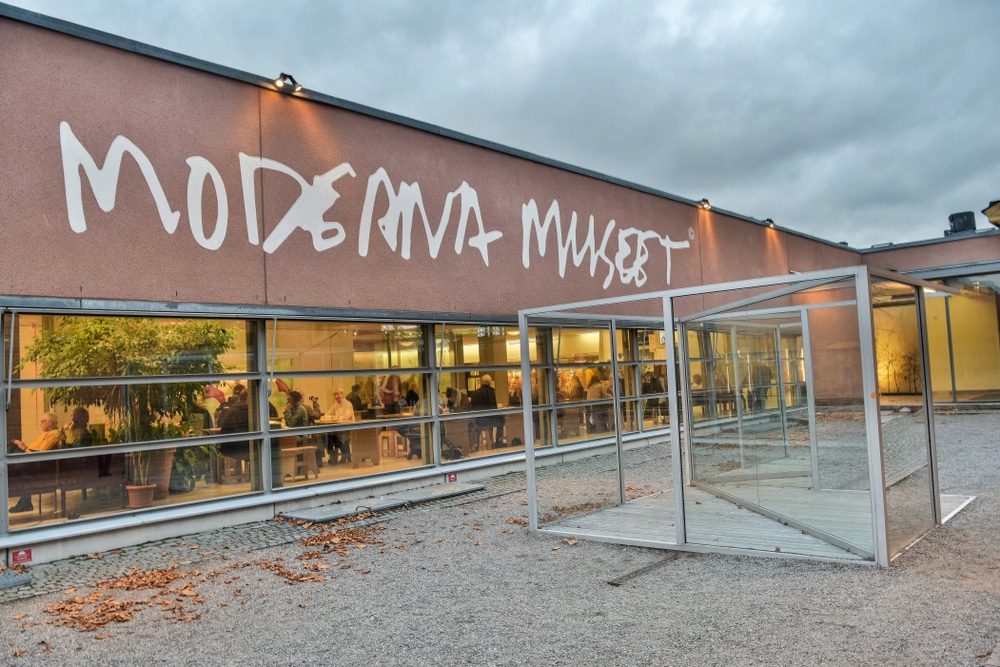 Source: Alizada Studios / Shutterstock
Source: Alizada Studios / ShutterstockOn the picturesque Skeppsholmen island, this public museum for modern art opened in 1958 in a former military drillhouse.
The Moderna Museet holds one of Europe’s great collections of 20th century art, with celebrated pieces by the likes of Picasso, Braque, Marcel Duchamp, Matisse, Dalí and Niki de Saint Phalle, as well as Swedish luminaries like Siri Derkert.
The collection has always stood out for its post-war American art, Swedish and Nordic art and French Modernism, but in recent years it has also augmented its catalogue of works by woman artists from all movements.
Admission is free, and you’ll only pay for the Moderna Museet’s superb temporary shows. There’s also a sculpture garden on the grounds, with pieces by Alexander Calder, Jean Tinguely/Niki de Saint Phalle and Joseph Kosuth, among others.
Website: https://www.modernamuseet.se/stockholm/en/
13. Swedish History Museum
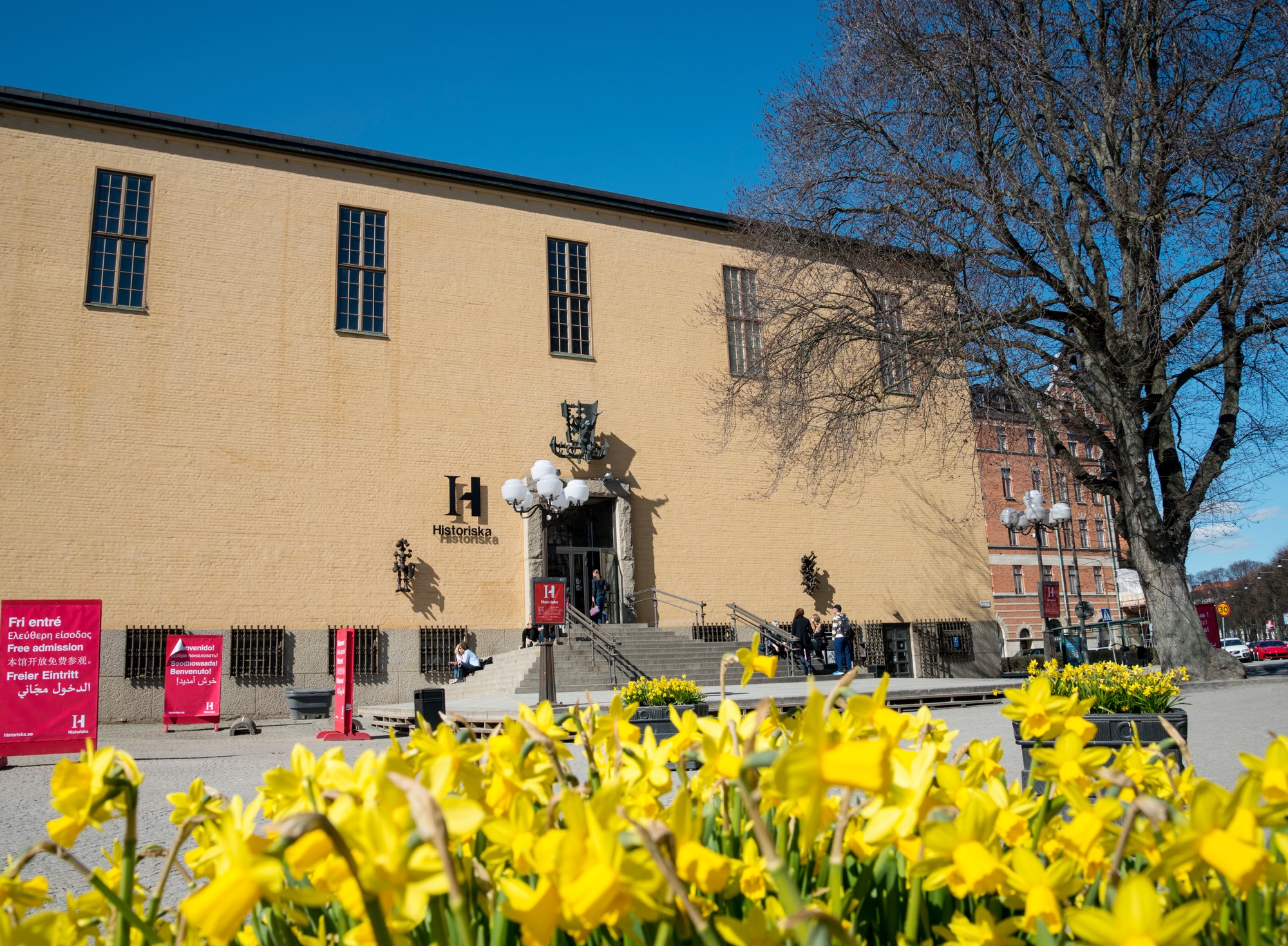 Source: facebook.com
Source: facebook.comYou’ll embark on a chronological voyage through centuries of Swedish history from the Mesolithic era onwards at this first-rate museum blending new exhibition technology with intriguing artefacts.
The Swedish History Museum is a must for its collections from the Middle Ages, both secular and religious.
The multifaceted exhibition, The Viking World, is the largest of its kind in the world, comprising 1,500 objects and diving deep into themes like trade, seafaring, handicrafts, mythology and the adoption of Christianity.
The museum also has one of the world’s richest collections of prehistoric and Medieval gold and silver, with the finest on show at the Gold Room.
Unmissable here is the Färjestadskragen, an intricate five-ringed collar, dating from the Migration Period.
Also enthralling is the vivid exhibition for the Battle of Gotland (1361), in which a makeshift army of farmers from rural Gotland was massacred by the well-trained forces of the Danish King.
Website: https://historiska.se/home/
14. Museum of Medieval Stockholm
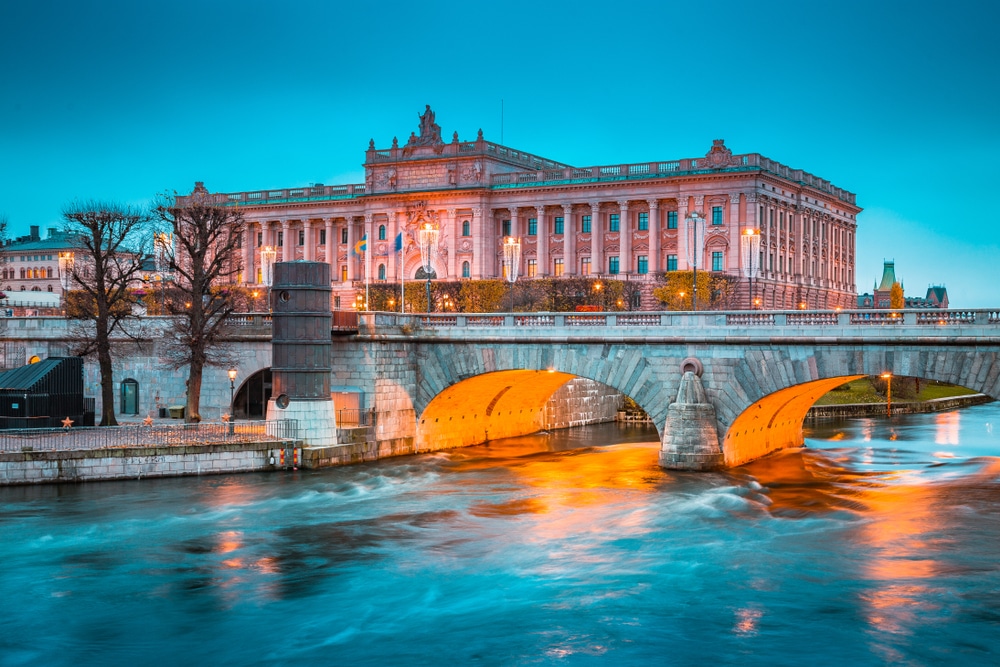 Source: canadastock / Shutterstock
Source: canadastock / ShutterstockA thrilling slice of old Stockholm came to light in the 1970s when work on an underground car garage to the north of the Royal Palace revealed a stretch of the city wall from the early 16th century.
This became a large archaeological site and plans for the car park were scrapped in favour of the Museum of Medieval Stockholm, inaugurated in 1986.
The attraction sends you beneath the surface of modern Stockholm to walk along 55 metres of the wall, visiting landmarks and scenes from the Medieval city.
Some of these have been built on centuries-old ruins and include everyday amenities like a tavern and a bakery, but also a graveyard, Stockholm’s 16th-century Town Hall, the town square and gallows.
A must-see is the Riddarholm Skeppet, 20-metre warship from the 15th-century discovered during dredging work in the Riddarholm Canal by the Gamla Stan.
Website: https://medeltidsmuseet.stockholm.se/in-english/
15. Junibacken
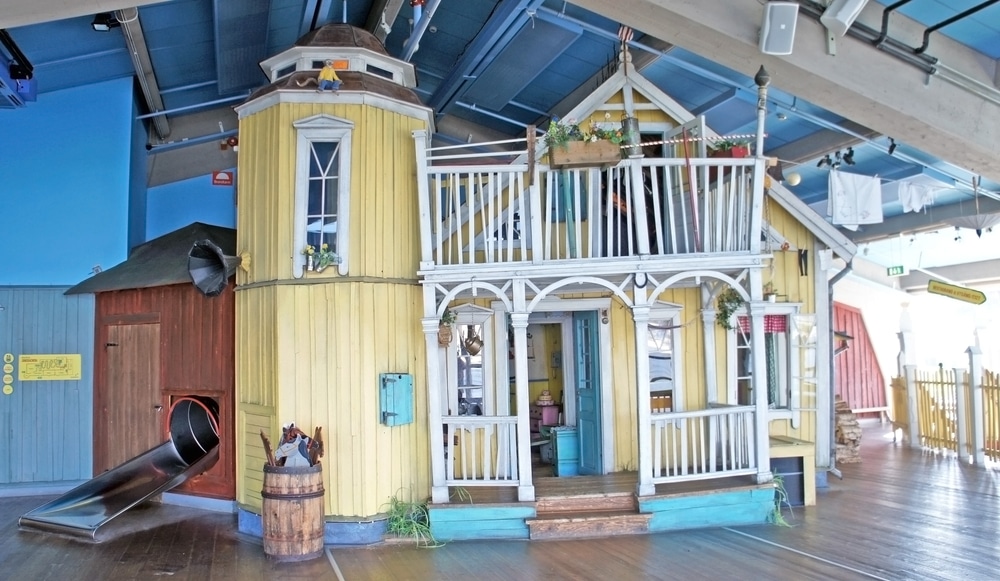 Source: Lunnaya / Shutterstock
Source: Lunnaya / ShutterstockOne of Stockholm’s most popular days out is rooted in Swedish children’s literature, especially the works of Astrid Lindgren (1907-2002).
Junibacken opened in 1996 and was designed with the help of Marit Törnqvist, who illustrated the later editions of Lindgren’s books.
Using storytelling, song, music, theatre and interactive exhibitions, Junibacken’s goal is to awaken children’s joy for reading.
Much of Junibacken is grounded in the whimsical world Pippi Longstocking, so for instance, kids can explore her house, Villa Villekulla, take a ride on her horse and meet characters from Lindgren’s tales on Storybook Square.
The Story Train is infused with scenes and characters from Lindgren’s books, and, touchingly, the Swedish audio features narration recorded by Lindgren herself.
Junibacken has Sweden’s largest children’s bookstore, with a massive range of titles, a comfy reading corner and lots of soft toys and dolls.
Website: https://www.junibacken.se/en/
16. Stockholm Cathedral (Storkyrkan)
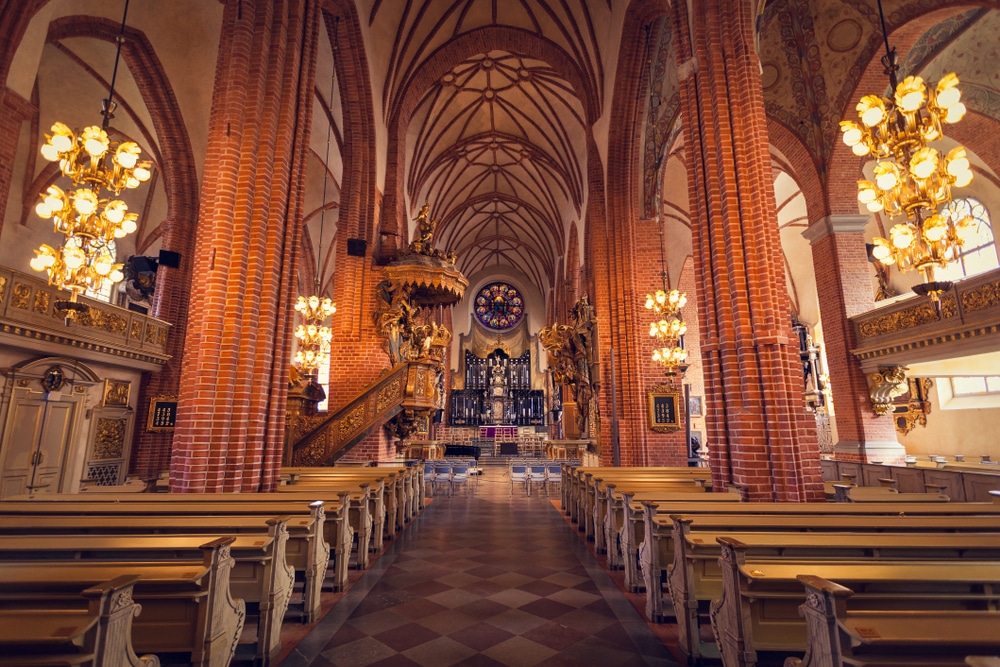 Source: Maurizio De Mattei / Shutterstock
Source: Maurizio De Mattei / ShutterstockAt the centre of Swedish political and religious life since the beginning of the 14th century, the Lutheran Stockholm Cathedral sits between the Royal Palace and Stortorget.
In that time many important events in Swedish history have taken place in this building, from coronations to weddings to funerals, for both royalty and prominent Swedes like Astrid Lindgren in 2002.
It was also here that Lutheranism was first publicly preached in Sweden, in 1525.
The exterior gained its present Baroque appearance in the 1730s and 40s, while the brick interior, with its fine rib and groin vaulting is still Gothic.
And while the exterior is understated, you have to go inside to view the marvellous furnishings.
In particular, look for the Late Gothic wooden sculpture of Saint George and the Dragon (1489) and the Vädersolstavlan painting (1535), which is the oldest depiction of the Stockholm cityscape in colour.
The exquisite main altarpiece is in silver and ebony and dates to 1635, and some other fittings to check out include the royal pews and pulpit (1698-1702) and the baptismal font (1514).
The cathedral has long held a high reputation for its organists and four choirs, and gives weekly concerts.
Website: https://www.svenskakyrkan.se/stockholmsdomkyrkoforsamling/visiting
17. Prins Eugens Waldemarsudde
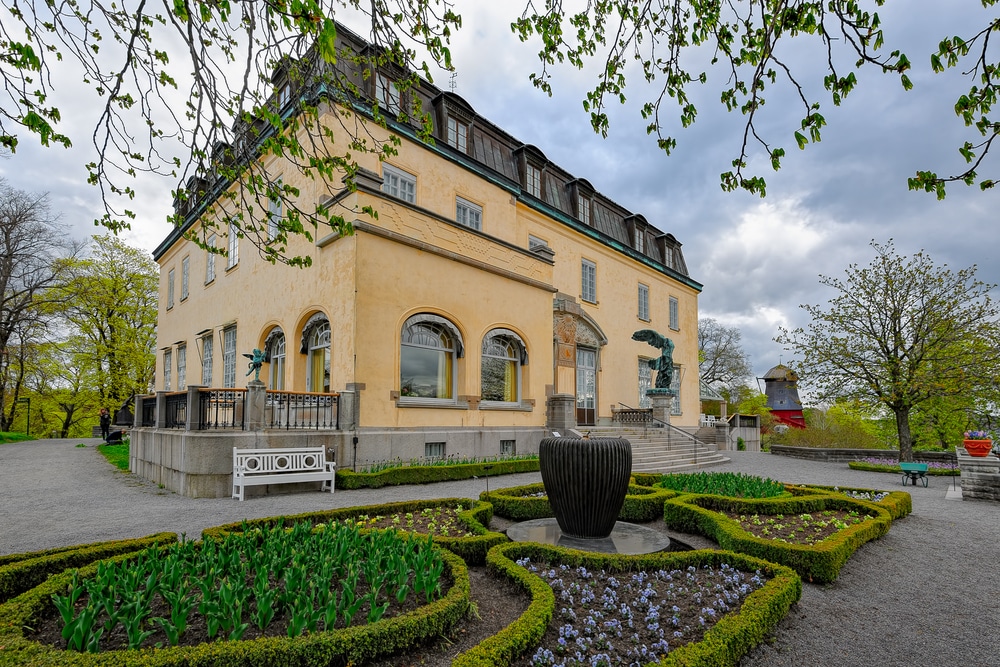 Source: Igor Grochev / Shutterstock
Source: Igor Grochev / ShutterstockThe youngest son of King Oscar II, Prince Eugen (1865-1947) was an accomplished landscape painter, studying in Paris in the 1880s, befriending some of the foremost artists of the day and amassing a strong collection of his own.
In the 1890s he established a retreat at Waldemarsudde on Djurgården on the site of a historic manor house dating back to the 18th century.
Eugen added an Art Nouveau mansion in 1905 and a gallery building in 1913. The property, now one of Sweden’s top art museums, is much as it was in the early 20th century, with sumptuous interiors and a formidable collection of turn-of-the-century Swedish art.
The prince’s preserved apartments are on the mansion’s ground floor, while the two upper floors, also comprising his studio, display his work, pieces from his collection and temporary exhibitions.
Littered with sculpture, the estate is ensconced in parkland with ancient oaks, and has enchanting waterside views.
Website: https://www.waldemarsudde.se/in-english/
18. Nordiska Museet
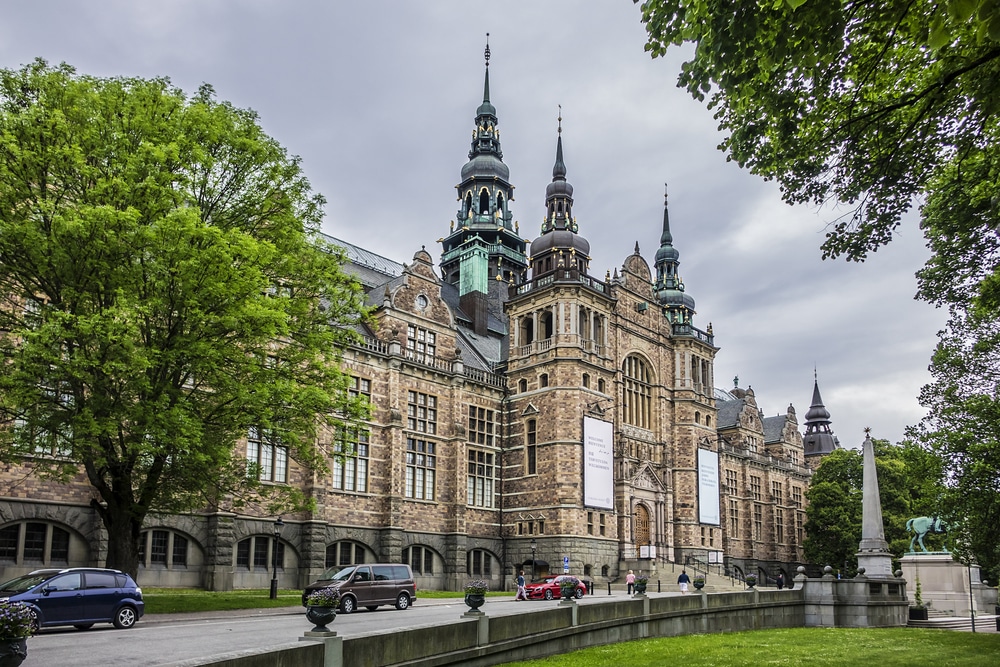 Source: Kiev.Victor / Shutterstock
Source: Kiev.Victor / ShutterstockThe founder of Skansen, Artur Hazelius, also set up this museum for Swedish ethnography and cultural history.
The Nordiska Museet is next to the Vasa Museum in Djurgården, and from 1873 to 1963 was actually part of Skansen.
There are more than 1.5 million objects in the museum’s inventory, across 500 years of Swedish history.
Exhibitions go into topics as varied as traditional celebrations, fashion, table settings down the years, jewellery, folk art, homes and interiors, toys and decorative arts.
There’s also a separate exhibition, Sápmi, dedicated to the Sámi people, Sweden’s only indigenous group.
The museum’s cathedral-like Renaissance Revival building was completed in 1907 after almost two decades of construction, and has an astounding main hall, 126 metres long, lit by skylights and dominated by a large statue of King Gustav Vasa “founder of modern Sweden”.
Website: https://www.nordiskamuseet.se/en
19. Södermalm
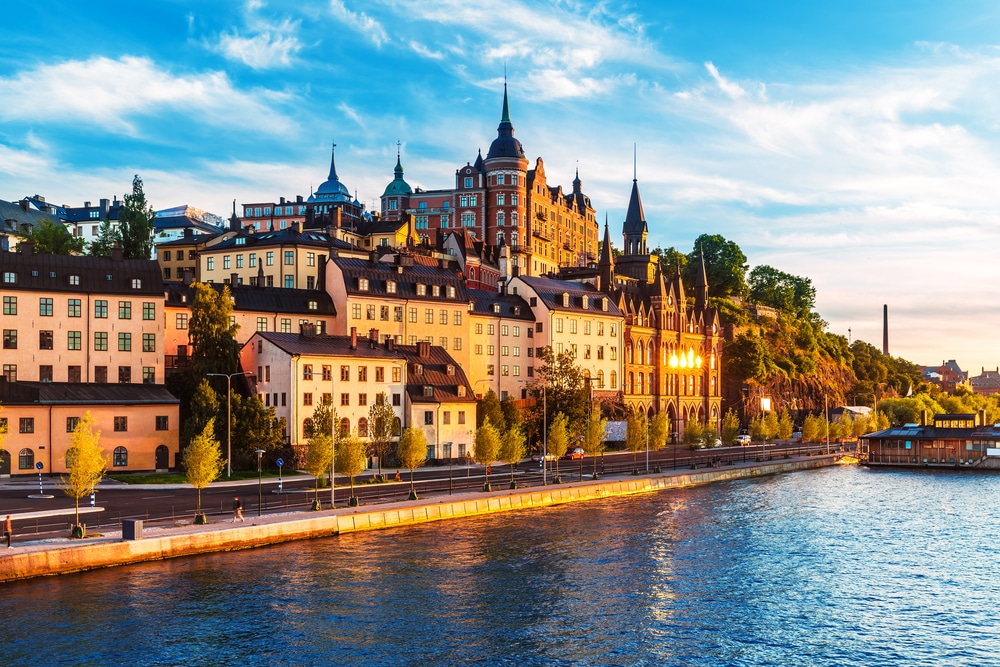 Source: Oleksiy Mark / Shutterstock
Source: Oleksiy Mark / ShutterstockKeep going south from Gamla Stan and you’ll be at the ultra-hip Södermalm, literally (Southern Island).
The rocky north coast pitches steeply into Mälaren and offers some fabulous vantage points, at Monteliusvägen and Fjällgatan in particular.
Södermalm was traditionally a working class industrial district, but nowadays is the source of Stockholm’s reputation for intimidating cool.
SoFo (South of Folkungagatan) is the headquarters for Sweden’s fashion and creative industries, while Mariatorget and Hornstull further west are awash with trendy cafes, vintage shops, design stores, galleries, an international choice of restaurants and any number of nightspots.
If all this makes you feel a little old, there’s much to love about the island’s parks, attractions like Fotografiska and the City Museum and those beautiful viewpoints.
20. Monteliusvägen
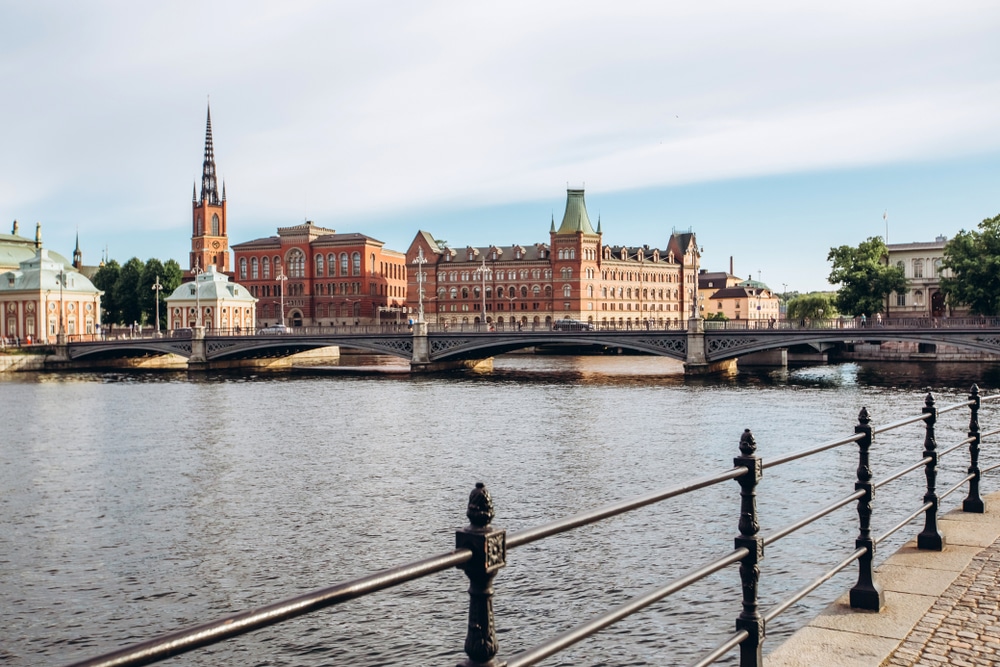 Source: StaniG / Shutterstock
Source: StaniG / ShutterstockMore on Södermalm’s most cherished vantage point, which is a footpath continuing along its rocky perch for half a kilometre and contained by a wooden guardrail.
For many people, Monteliusvägen is Stockholm’s most scenic spot, with a spellbinding panorama of Mälaren and Stockholm City Hall and the monuments of Gamla Stan.
Facing due north, the view is just as beautiful first thing in the morning as it is late in the day when the bay glints in the low light.
On the path’s landward side is an almost unbroken line of cute houses in pristine gardens.
21. Thiel Gallery
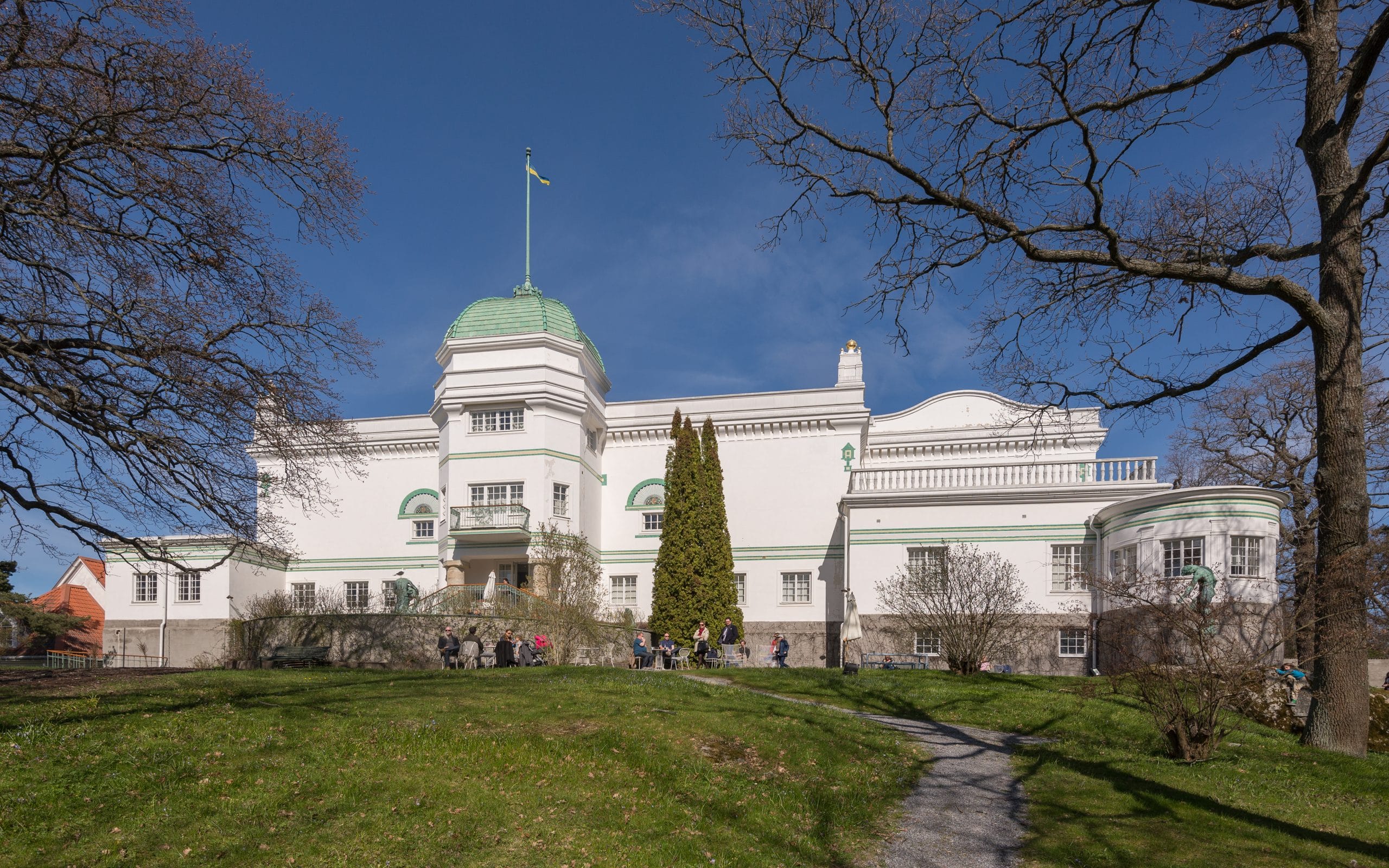 Source: Arild Vågen / Wikipedia | CC0
Source: Arild Vågen / Wikipedia | CC0Stockholm has a lineup of other high-brow museums that we can’t fit onto this list, but if you only have time for one more, the Thiel Gallery is an excellent pick.
This is based on the collection of banker Ernest Thiel (1859-1947) and hangs in the Art Nouveau Villa Eolskule, which he commissioned.
In a lovely setting on the east side of Djurgården, the property was sold to the state in 1924, along with all its contents and fixtures.
There’s an emphasis on Nordic art from the late 19th and early 20th century, with the world’s largest collections of works by Edvard Munch outside Norway, as well as pieces by prominent Swedish painters from the period like Bruno Liljefors, Anders Zorn and Eugène Jansson.
The house’s gardens are a treat too, enriched with sculpture by Auguste Rodin, Gustav Vigeland and Johan Tobias Sergel.
Website: https://www.thielskagalleriet.se/en/
22. ABBA: The Museum
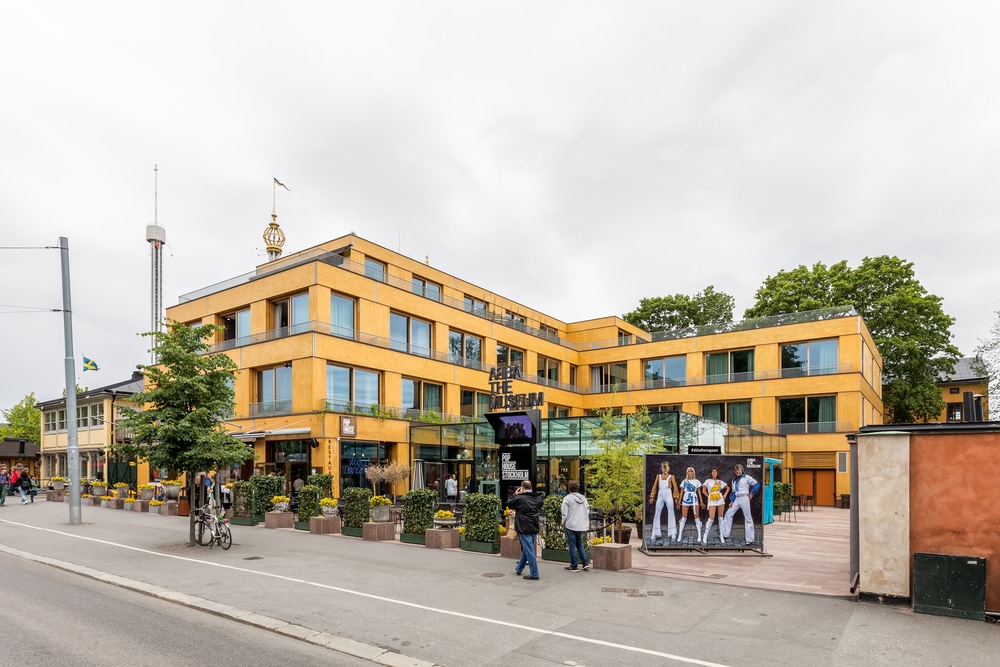 Source: Tommy Alven / Shutterstock
Source: Tommy Alven / ShutterstockYou can try to play it cool, but even if you’re not a fan there’s a good chance you know a big chunk of ABBA’s back catalogue.
Few groups in the history of pop music enjoy that kind of legacy. In the 40-odd years since they broke up, their timeless songs have never been far from the zeitgeist, thanks in part to a musical and the movies that it spawned.
This all makes their dedicated museum on Djurgården a worthwhile detour, and absolutely essential if you’re a fan.
Opened in 2013, this is not a static collection of artefacts, but rather an interactive experience, complete with an audio guide written by the screenwriter of Mamma Mia!.
There’s a piano hooked remotely connected to Benny Andersson personal grand piano, and only plays when, as well as a telephone that only the four ABBA members know the number to. Someone may just call when you happen to be walking past.
Elsewhere, you can step into an exact replica of the studio where the group recorded their hits, and will have lots of opportunities to test your knowledge of ABBA trivia with interactive quizzes.
Website: https://abbathemuseum.com/en/
23. Nobel Prize Museum
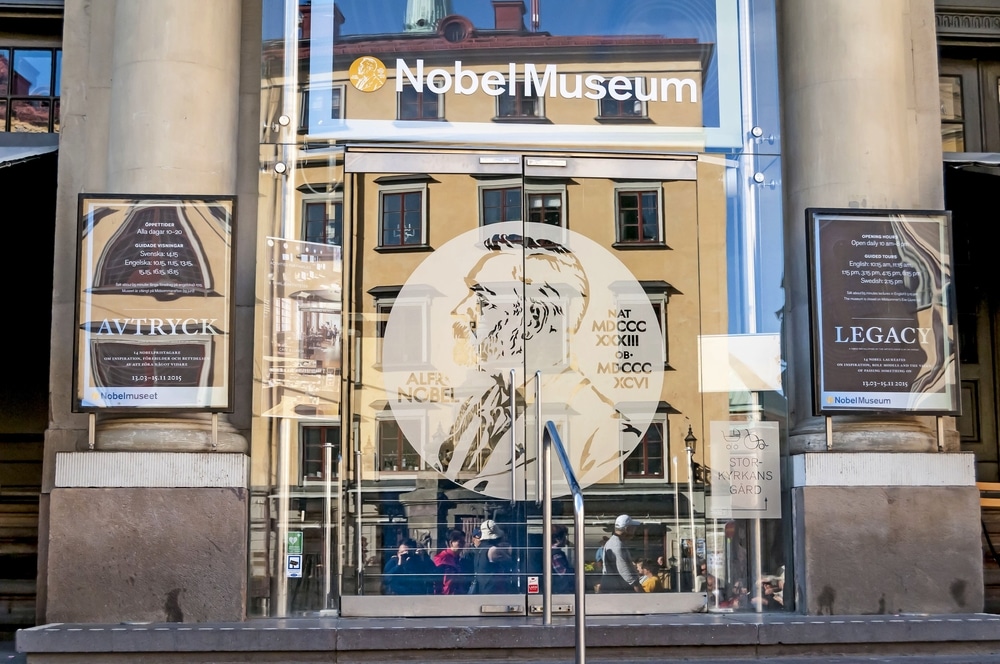 Source: Roman Yanushevsky / Shutterstock
Source: Roman Yanushevsky / ShutterstockIn 2001, on the 100th anniversary of the foundation of the Nobel Prize, the stately 18th-century Stock Exchange Building on Stortorget became the venue for a museum about this prestigious award.
One the menu is a constantly updated roster of temporary exhibitions based on the Nobel Prize’s fields, namely peace, literature and the natural sciences.
The Nobel Prize Museum is relatively compact, but has rich content, with donated artefacts, multimedia and accounts from the scientists, writers and freedom-fighters who have contributed the most to humankind over the last 120+ years.
You’ll see the table setting for the Nobel Banquet, every 10 December in the Blue Hall, and peruse prizewinners’ scientific documents, manuscripts, diaries, models, personal effects and much more.
Website: https://nobelprizemuseum.se/en/
24. Kungsträdgården
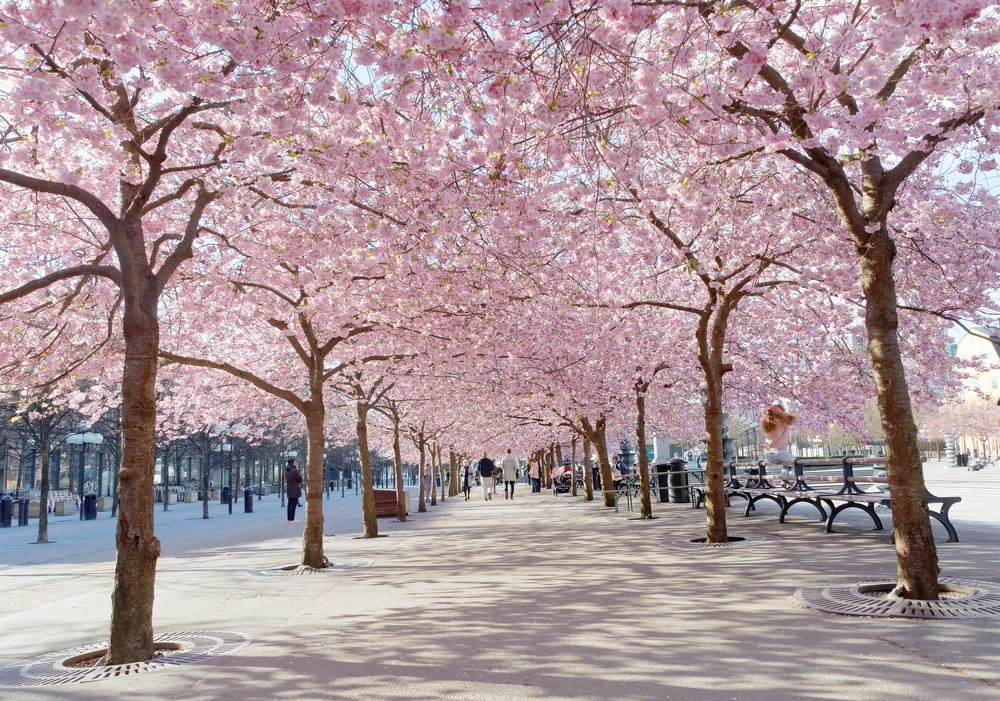 Source: Hans Christiansson / Shutterstock
Source: Hans Christiansson / ShutterstockRoughly translating to “King’s Garden” this rectangular space by the Strömbron bridge to Gamla Stan is one of the city’s favourite hangouts.
Kungsträdgårdenis is fringed by important buildings like the Royal Swedish Opera and Stockholm Synagogue, and is on the site of the Makalös Palace, built in the 17th century and pulled down in 1825 after a fire.
After a period as a military training area, the park opened to the public in the 1870s.
With art galleries, cafes, grand fountains and 19th-century monuments to King Charles XII and XIII, it’s a splendid place to go for a stroll.
In spring dozens of sakura trees are in flower, and there’s a skating rink from the start of December through to March.
A word on the Kungsträdgården metro station below, which is remarkable for its bare rock walls, historic architectural fragments and for being the only place in Northern Europe inhabited by the warm-climate cave spider, Lessertia dentichelis.
25. Strandvägen
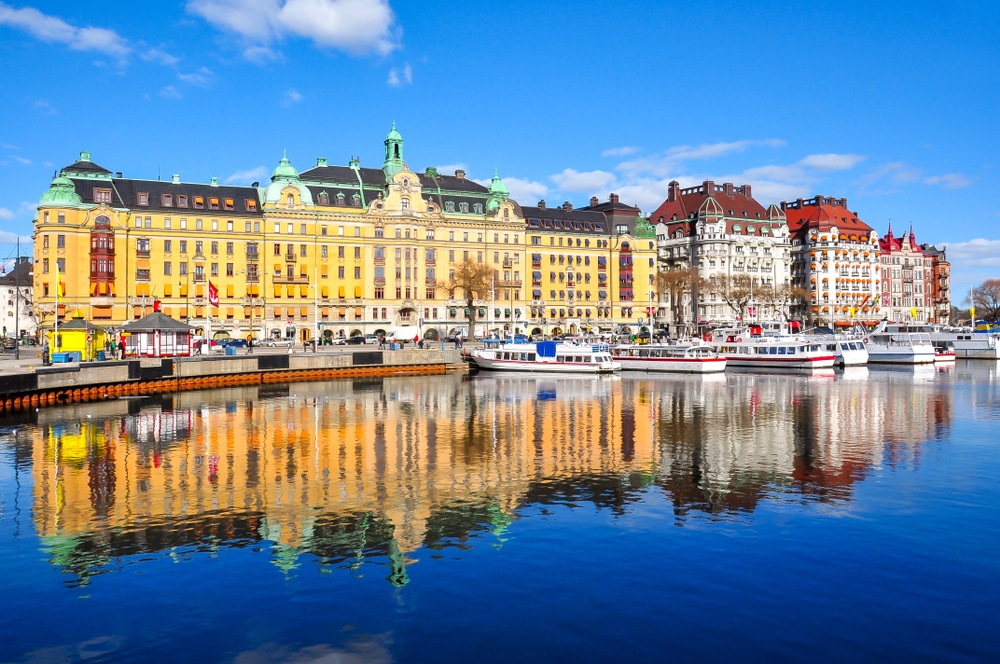 Source: Mistervlad / Shutterstock
Source: Mistervlad / ShutterstockIf you’re heading to Djurgården in summer, this waterside esplanade with a twin-row of neatly clipped lime trees is a ceremonious way to get there.
One kilometre long, Strandvägen took shape in the 1880s and 1890s with its multi-storey buildings in a variety of grand Historicist styles, many of which are now occupied by embassies.
Bünsow House catches the eye at No. 29-33, with a design inspired by the Renaissance châteaux of the Loire Valley.
All the while there are lovely vistas to the islands in the bay, through the masts of yachts along the quayside.
At the far eastern end is the Nobelparken, an arboretum with a specimen of almost every tree to grow within Sweden’s borders.